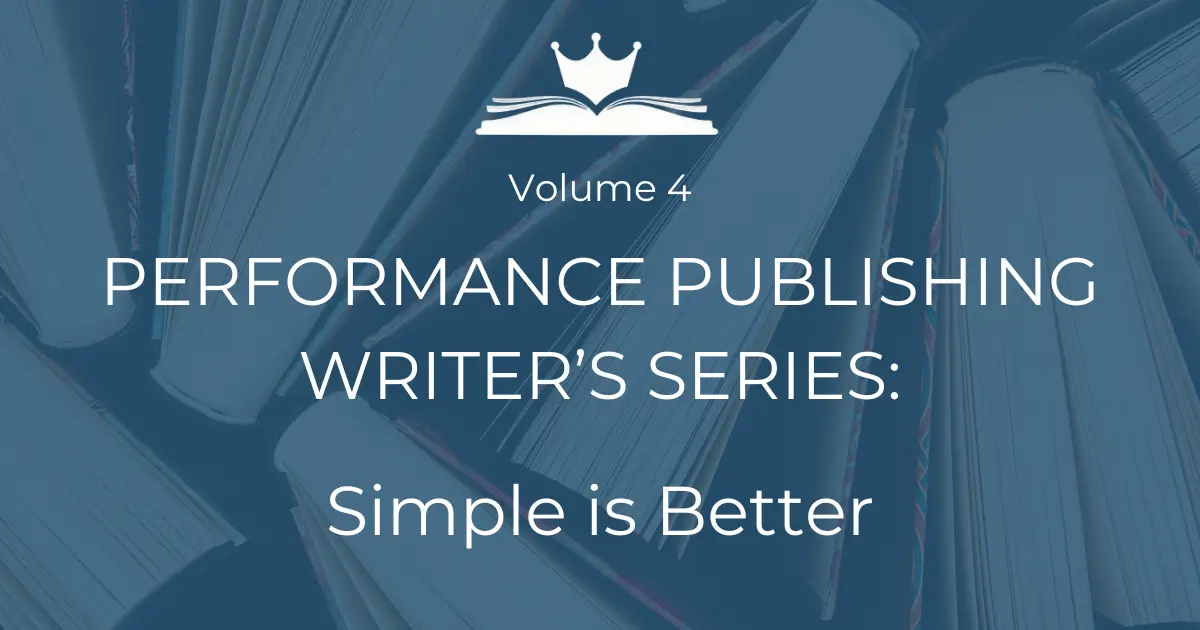
Studies show that the average attention span has decreased from 12 seconds in the year 2000 to just 8 seconds today, shorter than that of a goldfish. Being able to effectively communicate with people who are easily distracted is a relevant skill in 2024. Clarity and simplicity win. Complex words and long winding sentences no longer show your reader you are smart. Intelligence is demonstrated by being able convey complex ideas simply.
What happened? Why did things change? A lot of it has to do with that smart phone in your pocket. We’ve become accustomed to getting our information in short bursts. Whether it is a sound bite or a social media post, our attention is constantly demanded a few words at a time. This has changed our brains. And because our brains have changed, we must change the way we communicate with people.
Simple Words, Better Understanding
The trend toward simpler communication is evident across sectors. From tech to education, clear, jargon-free language is gaining ground. Clear messages stand out.
When it comes to writing, simplicity boosts understanding and engagement. It cuts across educational and cultural divides, making information accessible to more people. In marketing, for instance, straightforward messages are more likely to be remembered and acted upon.
Most importantly, simplicity builds trust. It signals transparency and shows that the writer grasps the subject well enough to explain it plainly. In contrast, complex jargon can seem evasive and create distance.
Simplicity Builds Trust
Simplicity in communication is not just a trend but a necessity today. It ensures that messages are not only heard but also understood and trusted.
Trust is key. That’s the goal, right? Especially when you are writing a book. You want your reader to trust you as an expert after reading what you have to say. By writing at a 5th to 8th grade reading level, you can keep your reader’s attention. They can follow your thinking. And you can leave them trusting you.
This means using straightforward words and short sentences. This style is clear and direct, making it easier for most people to read and understand quickly.
Research shows that simpler writing improves comprehension and memory. People recall information better when it's presented in plain language. Simple words and clear sentences reduce the mental effort needed to grasp the content.
Writing at a lower reading level isn't about dumbing down. It's about opening up access to information, ensuring more people can understand and remember the message.
Warren Buffett’s Letters
Investing icon, Warren Buffett provides a great example with his shareholder letters. Every year Buffett writes a letter to his shareholders that clearly explains the performance of his firm, Berkshire Hathaway. He’s been writing the annual letter for over 50 years.
These letters are legendary and have been compiled, studied, and imitated. What stands out is the simplicity and clarity of the letters. You would think that the chairman of a multinational conglomerate holding company would use complex language. Complex business, complex language, right? That is not the case.
Over the years, the letters have evolved to become even more straightforward and accessible. Initially, these letters contained more financial jargon and complex concepts. However, as Buffett’s understanding of effective communication grew, he shifted towards using everyday language that anyone could understand. Over the years the letters have gotten shorter, and the reading level has dropped.
Here are some key takeaways from Buffett’s approach:
1. Use familiar words: Buffett often opts for common, everyday language over complex financial terminology. This makes his messages more relatable and easier to grasp.
2. Be concise: He gets straight to the point, eliminating unnecessary words or technical jargon that might confuse readers.
3. Focus on clarity: Buffett’s goal is to inform and enlighten his audience, not to impress them with intricate vocabulary. He prioritizes clear, understandable communication.
4. Know your audience: Buffett writes as if he is talking to a non-expert, making his letters accessible to investors of all levels of experience.
Buffett’s approach demonstrates that effective communication is about making it easy for the reader to understand and engage with the content, regardless of their background or expertise. His letters serve as a powerful example of how simplicity can lead to better understanding.
“Tell Me About It” and Other Tips
One of the most helpful pieces of advice on how to practically apply this concept to your writing is WRITE LIKE YOU TALK. That’s it. If you wouldn’t use that word when telling a friend about the subject, don’t write it. This is commonly referred to as using a “conversational tone”. If you apply this filter to your writing, you will be well on your way to making sure your reader stays interested, understands what you are saying, and ultimately trusts you.
Here is a list of more tips to keep handy when writing:
1. Use Common Words: Choose simple, familiar words over complex or obscure terms. For example, use "help" instead of "facilitate" or "use" instead of "utilize".
2. Short Sentences: Keep your sentences short and to the point. Aim for an average of 15-20 words per sentence. This makes your writing easier to follow.
3. Active Voice: Use the active voice rather than the passive. For example, say "The cat chased the mouse" instead of "The mouse was chased by the cat". Active voice is more direct and engaging.
4. Avoid Jargon and Acronyms: Unless you're sure your audience will understand them, avoid jargon and acronyms. They can confuse readers who aren't familiar with them.
5. Use Concrete Examples: Illustrate abstract concepts with clear, relatable examples. This helps readers understand and remember your message.
6. Revising and Editing: Your first draft is just the starting point. Review and revise your writing to improve clarity. Look for opportunities to simplify language and remove unnecessary words or phrases. Your word count should go down as you edit.
7. Read Aloud: Reading your work aloud can help you spot areas where the language is complex or awkward. If you stumble over words, your readers might too.
By applying these strategies, you can make your writing more accessible and engaging. The goal is to ensure that your audience not only reads your message but also understands and remembers it. That is how you build trust with your writing.



